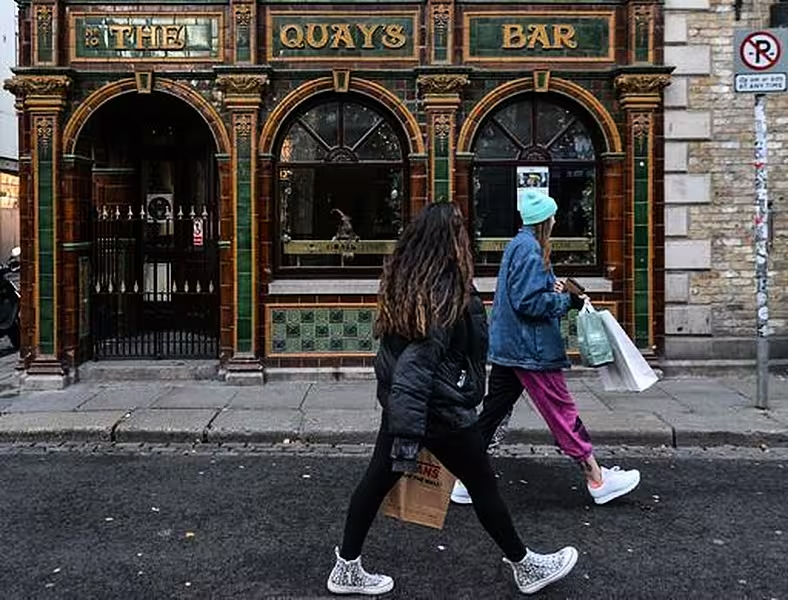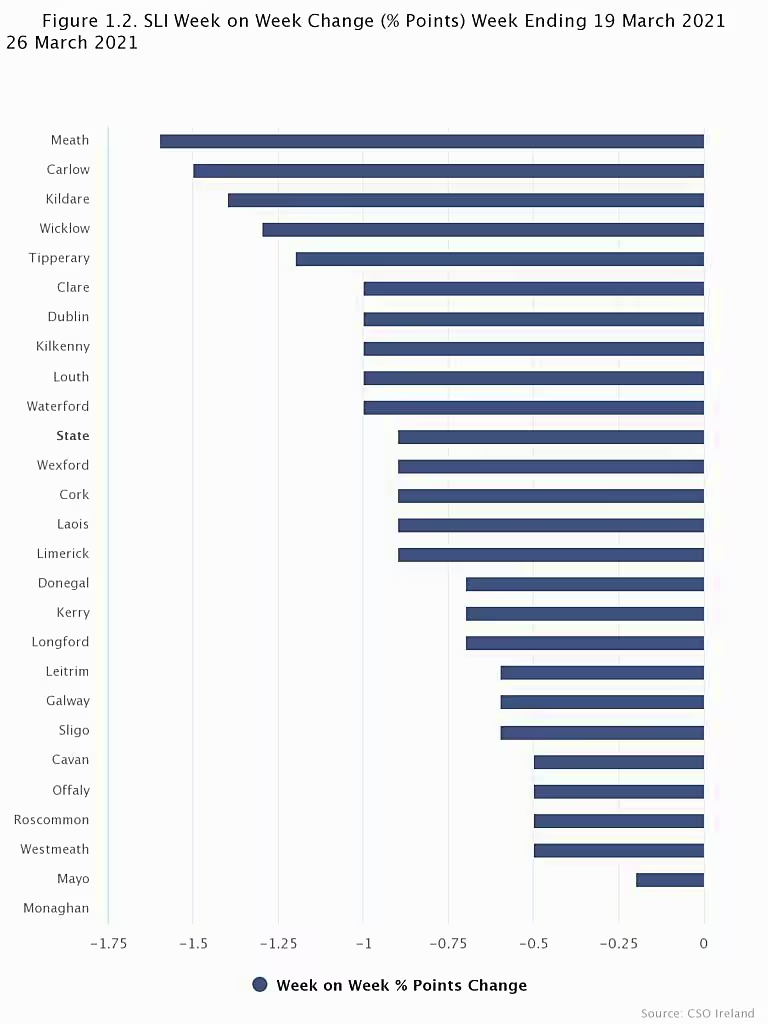
James Cox
Fewer people are staying within 10km of home despite Covid-19 restrictions, according to the latest data available.
The Central Statistics Office (CSO) has published the latest Staying Local Indicator (SLI) for the week ending March 26th.
Except for Monaghan, which shows no week on week change, all counties showed SLI decreases from the week ending March 19th, 2021 to the week ending March 26th, ranging from 1.6 per cent (Meath) to 0.2 per cent (Mayo).
Dublin continues to be the county with the highest percentage of the population staying local (79.2 per cent) during the week ending March 26th, reflecting its urbanised nature and access to services compared to other counties.

This is the ninth of an insight series on mobility produced by the CSO. The SLI provides daily estimated percentages of county populations that have stayed within 10km of home, averaged over the preceding seven days.
The SLI is based on statistical analysis of anonymised, aggregated, mobile phone activity records.
Data from Three Ireland is collated from anonymised data sets at a macro scale, aggregated at Electoral Division and provided to the Department of Health.

The latest CSO Staying Local Indicator for the week ending March 26th, 2021.
The scope of the arrangement between Three Ireland and the Department of Health is limited to informing the Government response to the Covid-19 pandemic only. This data feeds into wider selection of data used as part of the Covid-19 response.
Only aggregated statistical data is provided to the Department of Health. No personal data is provided.
County variations
Propensity to stay within 10km of residence tends to differ by county, as movement is impacted by local circumstances and conditions, such as access to services and levels of urbanisation.
For example, Dublin, with a high level of urbanisation, consistently shows the highest percentage of persons staying local, while Mayo and Roscommon, with relatively lower levels of urbanisation, are among the counties with the lowest percentage of persons staying within 10km of home.











